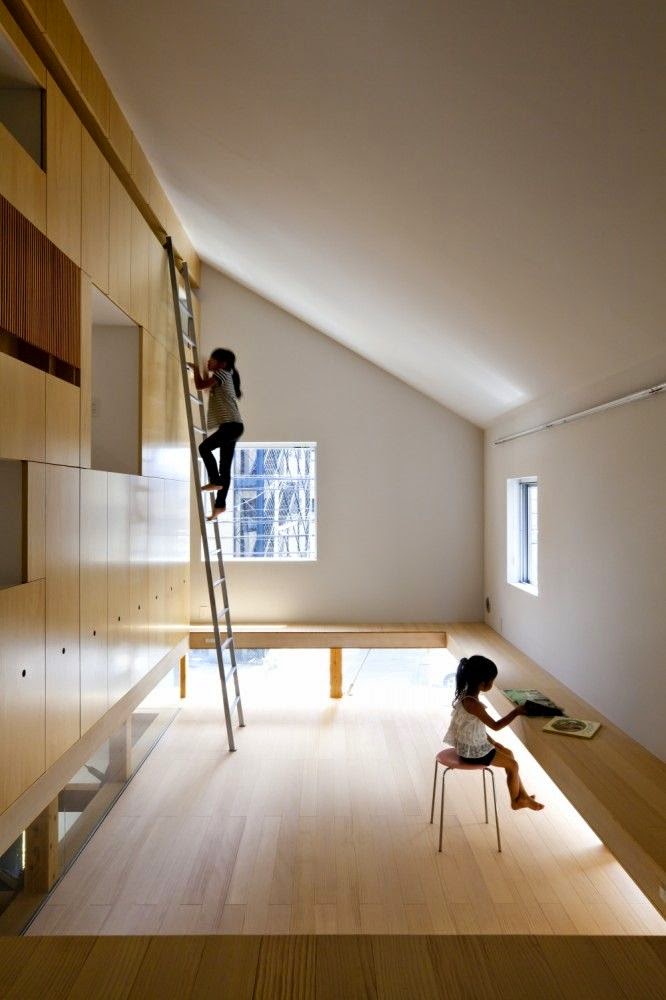Japanese interior design arrived in the west during the mid 19th century, Victorian era when trade opened up. However, it was actually discovered by the west in the 16th century.
 The image on the right is a lovely example of a traditional design, that could help you formulate ideas for your hallway styled in direction of a traditional Japanese home.
The image on the right is a lovely example of a traditional design, that could help you formulate ideas for your hallway styled in direction of a traditional Japanese home.
The style itself is the key influence on minimalism and sets out the principles for zen interiors.
Japanese homes are based on 'Ma', which directly translates as 'negative space'. So what does that mean and how does that work with interior design?
It means that you are aiming for achieving balance between the available space you have to work with and your furniture and objects. Keep your spaces clear and uncluttered to help create a very special and calm home.
The image below shows an open, bright bedroom styled with super modern, Japanese interior design. The hanging curtain replaces the traditional shoji screen. Great idea.
Decor: the biggest addition is the shoji screen or a version of, like the above example or the examples you can see in the Asian interior design section.
These are used to separate zones within your space or to conceal off an area. Screens can painted or plain, and can be both stationary and flexible. Analyze what would work best in your space and go for it.
 The image on the right is a lovely example of a traditional design, that could help you formulate ideas for your hallway styled in direction of a traditional Japanese home.
The image on the right is a lovely example of a traditional design, that could help you formulate ideas for your hallway styled in direction of a traditional Japanese home.
Screens are usually made from a timber frame with sometimes wooden lattice work or fabric internally.
Take a look at the flooring in this image. I love the use of three different types of flooring.
This helps to define the spaces as well adding color. You can see there are 2 types of timber and one stone.
Remember that your screen could be used just as a decorative item. Make a screen work for you in your space.
Color: Base your colors on a neutral palette. Look for ideas from nature and choose, soft, muted tones.
Your feature walls could be beautiful, deep colors that could add a luxurious feel to your space. Chocolate, moss green and black each look amazing.
The simple look of the bedroom, in the image below is a perfect example of how simple and modern Japanese interiors are. It has been designed with a light color scheme to compliment the simplicity of the design. The sliding door is a slick nod to the traditional shoji screens. Peaceful and restful describe this room perfectly.
Japanese interior design looks stunning in a well thought out balanced space using symmetry and complimentary lighting. Make sure you don't clutter up your room and stay away from introducing other design concepts e.g. art deco or retro etc.
Lighting: My best advice to you is, try to create your room with mid to low lighting levels to really give your space a feeling of true Japanese interior design.
Most if not all your lighting should be concealed or diffused which will fill your space with a soft atmosphere.
In the image of the bedroom below you can see a run of ceiling mounted lighting. Other than try to hide it, it actually becomes part of the space. The black run works in balance with the black surround used as the bath ledge. Nice.
A futon is a Japanese bed which is has a flexible wooden base and can fold to form a sofa, as shown in the image below, left. This kind of bed could work great in spare room or guest room. Easy to fold away, allowing more space when the bed isn't in use.
The key tone of atmosphere for this design style is definitely calming. Each space should flow effortlessly into one another with homogenous spaces that are open, clean and free from ornamental distraction.
How about the bedroom below where the absence of a bed frame gives the room a thouroughly Japanese and minimalistic feel? Like it? It is calm and has a sense of purity however, not everyone finds sleeping on the floor attractive.
I have attached this great image below of a really cool, modern living room styled with Japanese home decor, to show you how you can actually use strong, bold colors and still achieve your concept. The colors are fabulous.
Floor: The best flooring options for you to choose from is timber or bamboo collections. The above image shows a carpet which is perfect fine if you are confident to mix finishes into your concept.
Tatami mats are what you would find traditionally in homes, therefore you could use a couple of tatami mats to help bring some authenticity into your space.







No comments:
Post a Comment